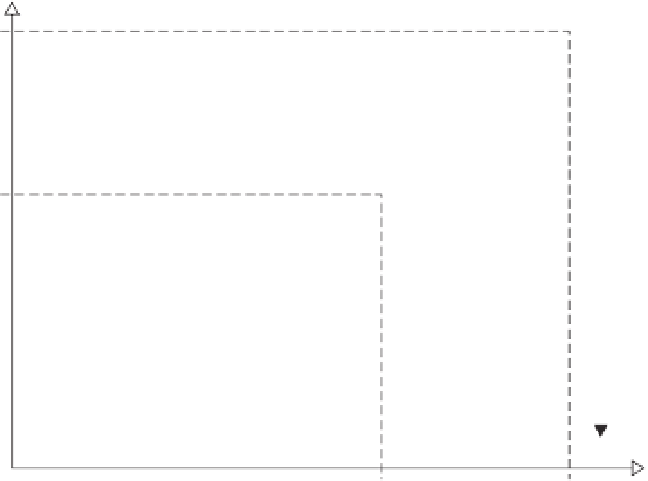Environmental Engineering Reference
In-Depth Information
System levels
Higher hierarchy models
RAINS
CASM
IMAGE
low
details
Adaptive
Learing
Network
Integrated multiple systems models
BIOME
FORGRO
FORSKA
Single problem models
EMEP
JABOWA
DECOMP
SAFE
PROFILE
high
details
FORSAFE
PnET
CENTURY
Number of variables/Increased time scale
Figure 17.9
Biogeochemical models can be categorized depending on which scale they are applied, as well as the degree of integration
of multiple processes over those scales.
problems to study. We will not produce a comprehensive
list, which would fast become redundant. Acidification
soil and surface-water models have been built for research
and learning purposes and from these the 'survivor' mod-
els that came to be used in the critical loads assessment
were derived. They are survivors because they do more
than exist in research laboratories - they are publicly
available, and they can be used by anyone, without exces-
sive training, they work on data that can be found and they
give useful results. They share many properties and differ
mainly in focus. The steady-state models for acidity are:
nutrient uptake to vegetation and cycling, nitrogen
transformation reactions and solute flow in the soil
horizon (Sverdrup and Warfvinge, 1995). It calculates
soil chemistry layer by layer: it is a multilayer model.
It differs from the two other models by calculating the
chemical weathering
a priori
, without any calibration,
from physical and geological soil properties, and not
using the weathering rate as a calibration parameter.
PROFILE is the only existing model that will predict
the weathering rate under field conditions from soil
mineralogy and geophysics.
•
SMB
is the general European default model for ter-
restrial ecosystems, which all countries are supposed to
use. It is a mass balance, one-box formulation, involving
one mass balance for ANC, coupled to a mass-balance
for base cations (Sverdrup and de Vries, 1994).
•
F-factormodels
are semi-empirical mass balance mod-
els developed for aquatic systems, applicable to acidity
only. All the different models, philosophically, go back
to the original ideas of Henriksen (the Henriksen
model). They make complex assumptions but are easy
to use on existing data (Brakke
et al
., 1990).
•
PROFILE
was developed for forest soils in Sweden
and it is a fully integrated process-oriented model;
it
There are also a number of 'survivor' models for
dynamic assessments for acidity. Dynamic models
are important for interpreting the critical loads, the
time aspect of effects and the devolution of effects
after emission reductions. The dynamic models are no
substitute for the steady-state models, and do not do a
better job just because they are more complex. Often the
complexity is offset by additional uncertainty resulting
from by the increased complexity. Calculating critical
loads with dynamic models is just a more complex and
expensive way to do something that could be done at less
cost and sometimes with better accuracy with models
like SMB or PROFILE. All of these survivor models are
available and easy to use.
focuses
on
the
kinetics
of
chemical
weathering,







Search WWH ::

Custom Search